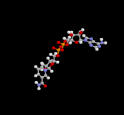
|
|
 |
|
|
|
|

|
Cellular
Respiration Index: Cellular Respiration is the process where living organisms gathers the energy in food molecules to make energy. Heterotrophs, organisms that must get energy from food indirectly from sunlight or inorganic substances, go through the process of cellular respiration to get the energy needed. This energy comes from food. Heterotrophs, including humans and other animals, undergo Cellular Respiration, where the energy contained in food is released to make ATP, which provides cells with the energy needed to carry out the processes of life. Cellular Respiration takes place in a living body of a heterotroph. In cellular respiration, there are anaerobic and aerobic processes. An anaerobic process is a process that uses metabolism without air, while an aerobic process is a process that uses metabolism with air. Synopsis of Cellular Respiration In Cellular Respiration, energy in organic compounds, including glucose, is harnessed. In stage one of Cellular Respiration, glucose is broken down in the cytoplasm through glycolysis, and converted to pyruvate, which produces a small amount of ATP and NADH. Aerobic and anaerobic processes both undergo glycolysis. In an aerobic process of cellular respiration, Stage 2 is when pyruvate and NADH are used to make ATP but in an anaerobic process of cellular respiration, a pyruvate is converted to either ethanol and carbon dioxide or lactate through fermentation. Cellular Respiration can be summarized further with its chemical equation:
The equation means that glucose, oxygen, and enzymes are needed to form carbon dioxide, water, and energy in the form of ATP. In addition, the numbers mean that the complete breakdown of a glucose molecule require six oxygen molecules and forms six carbon dioxide molecules, six water molecules, and ATP. CHEMICAL EQUATION FOR CELLULAR RESPIRATION: WHAT IT REPRESENTS
Glucose = required to start glycolysis Stages
of Cellular Respiration in more detail In Stage 1 of Cellular Respiration, Glycolysis occurs, where glucose is broken down in the cytoplasm. Both anaerobic and aerobic processes go though glycolysis. During glycolysis, a one six-carbon molecule of glucose is broken down to three-carbon pyruvates with the help of enzymes. Pyruvate is an ion, a molecule that has lost or gained one or more electrons. This ion makes up a three-carbon organic acid called pyruvic acid. Even after glycolysis, the pyruvate contains energy that was once stored in the six-carbon compound, the glucose molecule. If hydrogen atoms are transferred to NAD+, an electron acceptor, NADH is produced. NADH helps during glycolysis, because NADH donates electrons to other organic compounds. Because of that, NAD+ is reproduced, which can then accept more electrons. Aside from pyruvates being produced during glycolysis, 4 ATP molecules are also produced. Glycolysis requires 2 ATP molecules for energy, but gains two molecules, making 4 in total, with a total gain of two. Glycolysis = enzyme-assisted process that breaks down
a glucose molecule to two three-carbon pyruvates During aerobic cellular respiration, the pyruvate produced during glycolysis enters a mitochondrion where it is converted to a two-carbon compound, making a reaction. A Carbon dioxide molecule, a NADH molecule, and a two-carbon acetyl group are produced because of this reaction. The two-carbon acetyl group gets attached to coenzyme A, a molecule, which forms acetyl-CoA, a compound. The Krebs cycle is a series of enzyme-assisted reactions, through which Acetyl-CoA enters. First, a four-carbon compound merges with Acetyl-CoA, which turns into a six-carbon compound releasing coenzyme A. Then, after Carbon dioxide is released from the six-carbon compound, a five-carbon compound is formed. More NADH is produced when NAD+ accepts more electrons. A four-carbon compound is produced after carbon dioxide is released from the five-carbon compound. A molecule of both ATP and NADH are produced. Next, a four-carbon compound gets converted to a new four-carbon compound. FAD, an electron acceptor, gets electrons transferred to it, making a molecule of FADH2, another type of electron carrier. Finally, the new four-carbon compound gets converted to another four-carbon compound, and can restart the cycle after acetyl-CoA enters again. Another molecule of NADH is also produced. Because of the Krebs cycle, NADH and FADH2 is produced, which both contain most of the energy that used to be stored in pyruvate and glucose. Roles in Stage 2: Krebs Cycle = series of enzyme-assisted reactions,
process that produces NADH and FADH2 After stage 2 of aerobic cellular respiration, NADH and FADH2 produced by the Krebs Cycle go through an electron transport chain. The electron transport chain takes place in the inner membranes of mitochondria and is used to pump hydrogen ions out of the inner mitochondrial compartment. Because hydrogen ions accumulate in the outer compartment of this mitochondrian compartment, a concentration gradient is produced. A carrier protein help the hydrogen ions to diffuse back into the inner compartment. This carrier protein also produces ATP after a phosphate group is added to ADP. Hydrogen ions and electrons combine with oxygen molecules to form water molecules. Finally, ATP is produced after the hydrogen ions diffuse into the inner compartment through a channel protein. Roles in Stage 3 Electron transport chain = chain that takes place in
the inner membranes of mitochondria that are used to pump hydrogen ions
out of the inner mitochondrial compartment Diagram: During Stage 2 of anaerobic respiration, fermentation occurs after glycolysis. This process recycles NAD+ necessary to continue making ATP through glycolysis. There are literally a dozen different kinds of fermentation, but two very important types of fermentation are lactic acid fermentation and alcoholic fermentation. Lactic Acid Fermentation During Lactic acid fermentation Lactate, an ion of lactic acid, is produced. Lactate is produced after a three-carbon pyruvate is converted to a three-carbon lactate through fermentation. Lactate acid fermentation occurs in some organisms. Alcoholic Fermentation During alcoholic fermentation, Ethanol, a two-carbon compound is produced. During this form of fermentation, pyruvate is first converted to a two-carbon compound, releasing carbon dioxide. Then, electrons are transferred from a molecule of NADH to a two-carbon compound, ethanol. Terms to Know Cellular Respiration = process where heterotrophs harvest the energy in food molecules |
|










